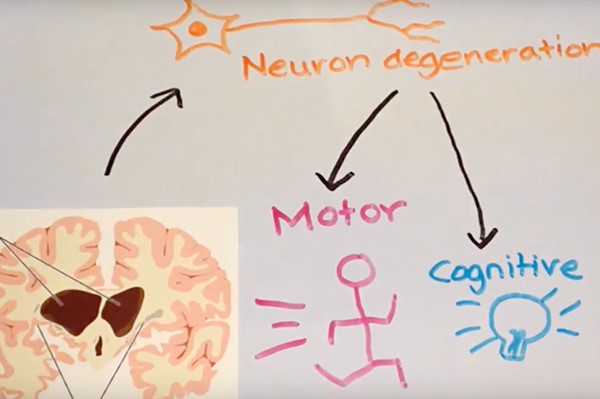
Huntington's chorea: causes, symptoms, diagnosis, polysomnography, treatment
Huntington’s chorea, an overview: extrapyramidal syndromes are neurological disorders involving structures of the central nervous system involved in the control of motor functions
Clinically, these syndromes are classically subdivided into hypertonic-hypokinetic, the paradigmatic picture of which is manifested in Parkinson’s disease, and hypotonic-hypokinetic, exemplified by Huntington’s chorea.
Chronic chorea (Huntington’s chorea) and choreic syndromes
Chronic chorea (Huntington’s chorea) is a hereditary disease, transmitted by an autosomal dominant mechanism with anatomopathological lesions in the putamen and caudate; the choreic syndromes, on the other hand, are a group of diseases with different aetiologies and united by the presence of choreic movements.
Clinical picture
Huntington’s chorea arises between the ages of 30 and 50 and is characterised by hypotonia and hyperkinesias consisting of involuntary, aphinalistic, irregular and asymmetrical movements affecting mainly the distal extremities of the limbs.
Personality disorders are also present (depression with suicidal ideation is frequent in these patients) and mental deterioration that may evolve into a full-blown dementia picture.
With regard to sleep disorders, difficulty falling asleep and nocturnal awakenings have been described (Puca et al., 1988).
Polysomnographic picture
Very few polygraphic investigations have been conducted in this pathology; moreover, they are generally performed during pharmacologically induced sleep and with mixed results.
Winfield and Sparer, during sleep with thiopental, had found in all the syndromes with lesions of the basal ganglia, including the chorea, absence or depression of the spindles; a significant increase in the spindles compared to normal controls had instead been shown, in chronic and acute choreics, during sleep facilitated by secobarbital and chlorpromazine by Puca et al. (1988).
Given the conflicting observations in the literature, Puca et al. (1988) examined spontaneous sleep in chronic choreics.
The choreics showed little sleep, delayed falling asleep, frequent awakening and being awake for a long time.
Their REM sleep appeared poor and slow-wave sleep poorly represented but with great spindling richness (contrary to other dementia forms).
Pathophysiology of Huntington’s chorea
The cause of the disease is a genetic alteration.
The clinical picture is generated by hyperfunction of the dopaminergic system and hypofunction of the cholinergic and GABAergic systems.
Drug therapy for Huntington’s chorea
It is based on the use of drugs active on hyperkinesias such as phenothiazines and haloperidol.
Read Also:
Emergency Live ancora più…live: scarica la nuova app gratuita del tuo giornale per iOS e Android
Sydenham’s Chorea (St. Vitus’ Dance): Causes, Symptoms, Diagnosis, Therapy, Prognosis, Recurrences
Paediatrics, What Is PANDAS? Causes, Characteristics, Diagnosis And Treatment
Childhood Absence Type Epilepsy Or Pycnolepsy: Causes, Symptoms, Diagnosis, Treatment
Rheumatic Fever: Causes, Symptoms, Diagnosis, Treatment, Complications, Prognosis


